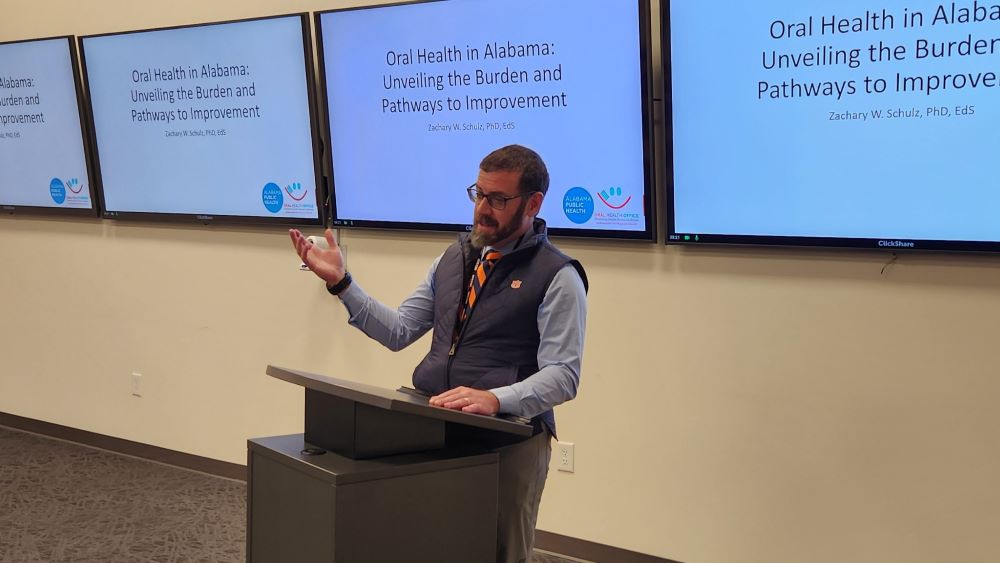Auburn University historian provides Alabama's first state oral health report

The Alabama Department of Public Health tasked History Lecturer Zachary Schulz with mapping the burden of dental disease across the state of Alabama. Schulz's one-of-a-kind report will inform state health agencies, dental schools and policymakers on ensuring every Alabamian has access to oral health care.
"The presentation is reporting the oral health burden of disease in Alabama. Typically, such reports cover the prevalence, incidence and impact of oral diseases and conditions within a population," Schulz said. "The report also highlights disparities in oral health and suggests strategies for prevention and intervention to mitigate the burden of oral diseases."
Dental health gaps exist across ethnic and racial groups in the U.S. In Alabama, Schulz found that Black residents face dental decay, untreated cavities, periodontal disease and tooth loss at higher rates than white residents. Mexican Americans aged 30 or older also faced a higher rate of dental disease.
Rural communities also faced poorer dental health due to barriers such as access and lack of dentists. Alabama's population is more than 43% rural, and in each of those communities, a single dentist may have more than 3,800 potential patients – double the patient load found in urban counties.
"Rural areas encounter challenges such as limited access to dental care, higher rates of disability, poverty and lower educational attainment," Schulz said. "This context is crucial for policymakers and health care professionals in devising effective interventions to address oral health disparities, particularly among demographics like children, working-age adults and the rapidly growing population of individuals aged 65 years and older."
Beyond oral health, dental disease may be associated with cardiovascular conditions such as heart disease. Factors such as reduced federal funding for education and an aging workforce influence the state's dental professional shortage. These and other key findings may provide a foundation for intervention efforts to address health disparities.
Schulz leveraged his background in history to thoroughly analyze, map and communicate the burden of oral disease the state is facing. He said a report that accounts for Alabama's demographics, history and accessibility of oral health care will inform changes to the health care environment of the state.
"The state has never had such a formal report before," Schulz said. "Without having had previous, we cannot adequately address areas for improvement or areas we are succeeding in. We are not unique as a state in facing challenges in oral health care, that is a national thing, but the specifics of where we are differ state-to-state."
Schulz's "Oral Health in Alabama: Unveiling the Burden and Pathways to Improvement" was delivered to the Oral Health Coalition of Alabama in March. In August, Schulz, the ADPH, faculty from the University of Alabama at Birmingham and other stakeholders workshopped how to leverage the findings to improve oral health in Alabama.
Schulz worked closely with State Dental Director Tommy Johnson, DMD, to complete the report. Intended as a companion to Alabama's first State Oral Health Plan released in 2019, "Oral Health in Alabama: Unveiling the Burden and Pathways to Improvement" is Alabama's first published burden of oral disease document.
The document serves as a benchmark of the present status of oral health in the state and emphasizes the disparities faced by residents, most notably the underserved and most vulnerable of the population.
"It is my hope that the information contained within the document may act as the impetus for policymakers and stakeholders to address the needs of our residents related to oral health and its relation to overall health of Alabamians," Johnson said. "Dr. Schulz has crafted an incredible and compelling document that absolutely embodies the areas of concern."
Read the full report at the Alabama Public Health website.
Tags: History Faculty Research Community, Outreach and Engagement







